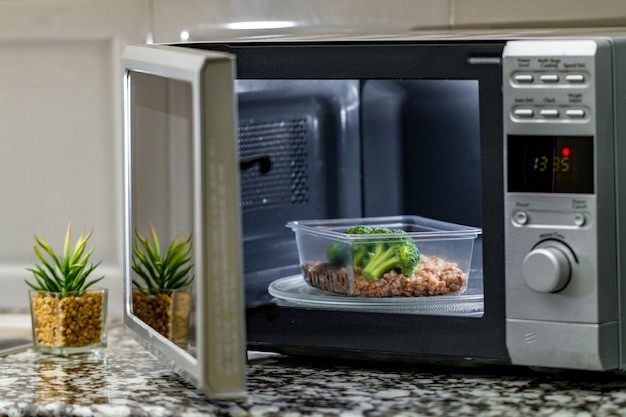In today’s fast-paced world, microwave ovens have become an indispensable kitchen appliance for many, especially for those who value the convenience of quickly reheating or cooking food.
But, as with many modern conveniences, questions about the safety and health implications of microwaving food persist. For women aiming to adopt a healthier lifestyle, understanding the impact of microwaving on nutritional value and overall health is vital.
Understanding the microwave process
Microwave ovens cook food by emitting electromagnetic waves that excite water molecules in the food, generating heat. The heat then cooks the food from the inside out. This method contrasts with traditional cooking methods that heat food from the outside in.
Nutrient retention
One of the primary concerns about microwaving food is the potential loss of nutrients. Cooking can indeed lead to a reduction in certain nutrients, particularly water-soluble vitamins like vitamin C and some B vitamins.
However, according to the Cleveland Clinic, a renowned American academic medical center based in Cleveland, Ohio, microwave cooking may actually preserve more vitamins and minerals than some other cooking methods, like boiling, due to the shorter cooking time and reduced use of water.
Safety of microwaved food
The microwave process itself doesn’t make food “unhealthy.” However, attention needs to be given to the containers used while microwaving. According to the U.S. Food and Drug Administration (FDA) and as reiterated by WebMD, a global leader in health news and information, not all plastics are safe for microwaving. Some plastics can melt or warp, potentially leaching chemicals into the food. It’s essential to use microwave-safe containers to avoid this risk.
Uniform cooking
One notable challenge with microwaving is ensuring even cooking. The Centers for Disease Control and Prevention (CDC), the national public health agency of the United States, points out that uneven cooking in microwaves can lead to “cold spots” where harmful bacteria survive. It’s crucial to stir and rotate food during microwaving and allow resting time afterward to ensure even heat distribution.
Does microwaving produce harmful radiation?
A common misconception is that microwaving food can make it radioactive. However, this belief is unfounded. As emphasized by Mayo Clinic, a respected American academic medical center, microwaves do not make food radioactive.
They emit non-ionizing radiation, which is vastly different from the ionizing radiation of X-rays. When used according to manufacturers’ instructions, microwave ovens are safe and convenient for heating and cooking a variety of foods.
Making the best of your microwave
For women looking to maximize the health benefits of their food, here are some microwave-friendly tips:
• Use microwave-safe containers: Always use containers labeled as “microwave safe” to ensure no harmful chemicals leach into your food.
• Minimize cooking time: To retain the maximum nutrient value, reduce the microwaving time. Since microwaving often requires less time than other methods, this can help preserve essential vitamins.
• Add minimal water: If you’re cooking vegetables, add only a small amount of water. This can help reduce nutrient loss.
• Cover Food: Covering food helps cook it evenly and can also reduce cooking time.
Conclusion
Microwaving, when done correctly, is not only safe but can also be a healthier method of cooking in some respects. While it’s essential to ensure even cooking and use the right containers, the fears surrounding microwaving and health largely stem from myths and misunderstandings.
For women on a journey to better health, it’s always wise to stay informed. Relying on credible sources like Healthline, an American website and provider of health information headquartered in San Francisco, California, and other reputable organizations can help dispel myths and guide informed choices.
Incorporating varied cooking methods, including microwaving, into one’s culinary repertoire can offer both convenience and health benefits. Embrace the technology, but always with knowledge and awareness.


